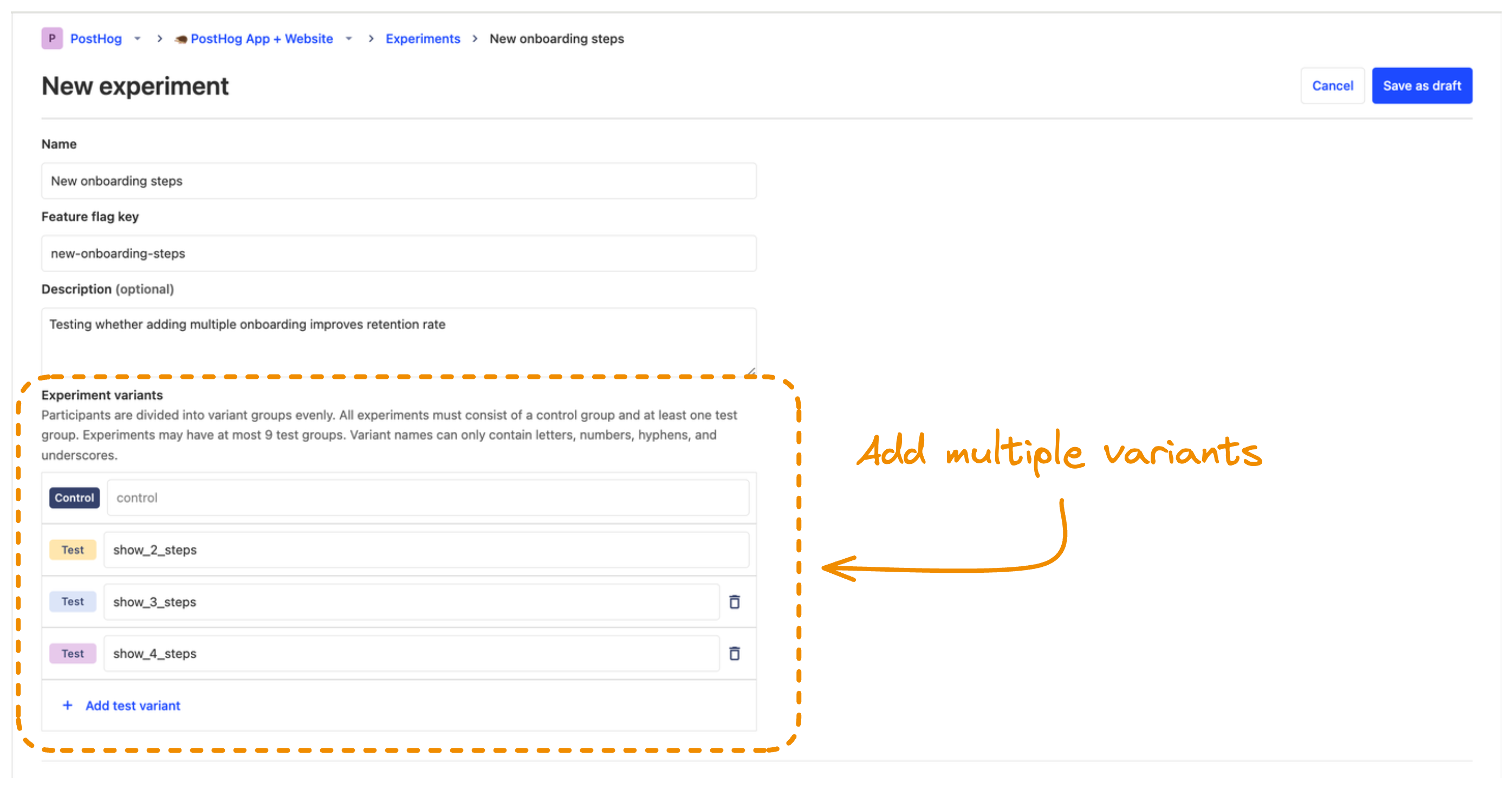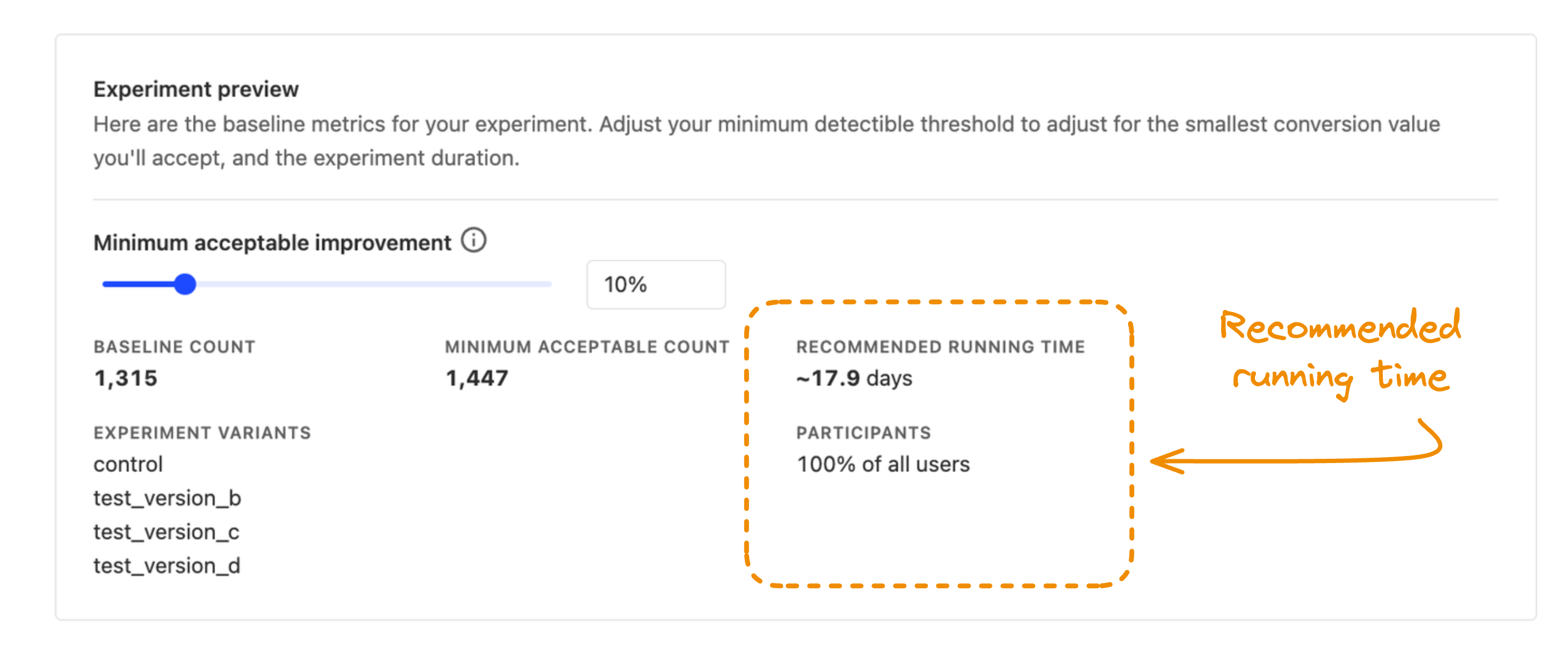
Multivariate testing, explained (with examples)
Contents
What is multivariate testing?
Multivariate testing is when you test several different combinations of changes to determine which performs the best.
It's distinct from A/B testing, where you only test two variants – a control and a single variant you want to test against it.

Here's an example:
Imagine you want to test how the color and placement of a button affects your conversion rate. In A/B testing you'd have to run three separate tests, one after the other, to determine which change had an impact.
In multivariate testing, you simply create one test with four different variants:
- The control variant.
- The variant with only the color changed.
- The variant with only the placement changed.
- The variant with both the color and the placement changed.
The results from the multivariate test show not only which variant performs the best, but also how each factor affected the outcome.
Benefits of multivariate testing
1. It saves you time
Running multiple A/B tests at the same risks them interfering with each other. As a result, you usually need to wait for each test to finish before starting the next one.
Multivariate tests enable you to test multiple combinations at the same time, meaning you don't have to wait for many consecutive tests to finish.
2. It reveals how different elements interact with each other
Multivariate testing is not just about looking at which variant is the best; it's about understanding the weight each factor had in that success.
For example, let's say you're testing changes to the user dashboard of a B2B SaaS app. You decide to test how both the position of the navigation menu and the text of the buttons affect user engagement.
In isolation, changing the button text might affect how well users understand your app. Similarly, moving the navigation menu from the top to the side could influence their ability to navigate it.
However, when you combine and test these changes together, you may discover that their combined effect is not necessarily greater than each individual change.
Multivariate testing enables you to uncover insights like these.
Drawbacks of multivariate testing
1. You need a larger sample size
Since you split your participants into many groups, you need a larger sample size for a statistically significant result. In practice, this means multivariate tests need to for run longer than a typical A/B test.
With this in mind, a good idea is to calculate your required sample size before running your test, so you can ensure your test duration is reasonable.
If your duration is too long, but you'd still like to run a multivariate test, there are two potential solutions:
Target proxy metrics – e.g., if your goal is to increase conversion, instead target a metric higher up the funnel, like number of signups.
Use surveys – It's often easier to ask your users about their experience instead of guessing it from metrics. Survey responses can help decision-making when statistical significance is difficult to achieve.
💡 PostHog tip: If you're running your test with PostHog, we calculate the recommended running time for you.
2. Multivariant tests require more work
Because you have many different variants, multivariate tests require more code, generate more data, and need more time to analyze results than A/B tests.
For example, if you have three properties and two possible variations for each, you need to create six different versions of your feature to test. Then, you need to analyze the results of each one. This can be a big effort if you plan to uncover and compare the nuances of how each variant affected user behavior.
Multivariate tests can generate great insights, but they also use up more of your team's resources.
Multivariant vs A/B tests
Here is a table summarizing the differences between the multivariate and A/B tests:
| Situation | A/B Testing | Multivariate Testing |
|---|---|---|
| # of variants | Two | Three or more |
| Complexity | Low | High |
| Sample size required | Smaller | Larger |
| Duration | Shorter | Longer |
| Clarity of results | Easier to interpret results. | Results may be more difficult to interpret due to multiple variables. |
| When to Use | You have a clear hypothesis about one variable. Decisions need to be made quickly. Test is straightforward. | You want to explore how multiple variables interact. You can afford a longer test duration. You have enough users to reach statistical significance. |
How to implement multivariate tests in PostHog
Now that you know all about multivariate testing, here's how you implement one in PostHog:
- Start by creating an experiment in PostHog.
- In the "Experiment variants" section, add your variant's by clicking "+ Add test variant"
- Fill out the remaining fields, such as feature flag key, goal metric, and any other details.
- Click "Save as draft".
- Add the experiment code to your app by customizing the user experience for each variant.
- Launch your experiment.

Further reading
- 8 annoying A/B testing mistakes every engineer should know
- Guardrail metrics for A/B tests, explained
- How YC's biggest startups run A/B tests (with examples)

Subscribe to our newsletter
Product for Engineers
Read by 100,000+ founders and builders
We'll share your email with Substack
PostHog is an all-in-one developer platform for building successful products. We provide product analytics, web analytics, session replay, error tracking, feature flags, experiments, surveys, LLM analytics, data warehouse, CDP, and an AI product assistant to help debug your code, ship features faster, and keep all your usage and customer data in one stack.










